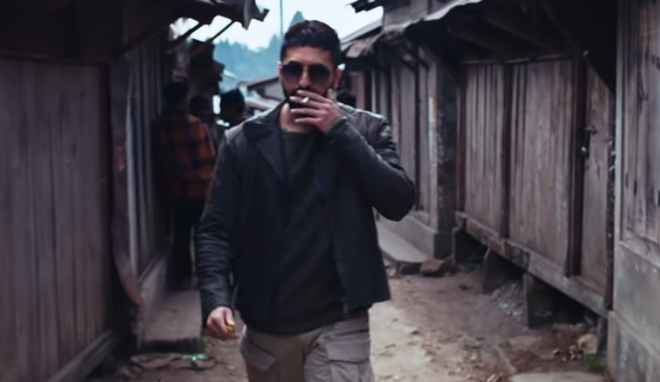‘Mulk’ (2018) marked the beginning of a new chapter in filmmaker Anubhav Sinha’s career. After years of making films that he hoped would appeal to the masses and set the cash registers ringing, he decided to tell the kind of stories he wanted to tell. And, that resulted in his resurgence as a filmmaker. His last three films (‘Mulk’, ‘Article 15’ and ‘Thappad’) have been of very high quality and what’s also interesting is the fact that he has made such complex films, which are driven by issues, at such a good pace. His new film ‘Anek’ reunites him with Ayushmann Khurrana. The subject is fresh and different from what the actor-director had worked on the last time around. However, there are some themes that are common to both films.
The conflicts in the North-Eastern states of India have not been discussed as widely as some of the other pertinent socio-political issues the country is dealing with. Even when you try to look for literature based on this issue, you will come across a handful of books or documents in the public domain. After watching ‘Anek’, you cannot help but laud Anubhav Sinha and his team for doing a tremendous amount of research on it and putting together a film that will impart some information to the viewer about the issues these states are facing. Apart from bringing to the fore the problems of the North-Eastern states, the film also talks about how the residents of these states are treated as outsiders by a large chunk of the people living in the country.
One cannot question Sinha’s intentions but it is also difficult to make peace with the disjointed narrative of the film. The script, written by Sinha, Sima Agarwal and Yash Keswani, is well-researched but packs in too many things at once. The amount of information the writers want the audience to have would be difficult to process even by the most discerning viewer. To make a statement, Sinha should have handpicked a few elements and tried to bring them to the fore.
Another issue with the film is that too many creative liberties have been taken. Some of the crucial moments in the film are driven by tried-and-tested tropes used in Hindi cinema several times. They come across as unconvincing and severely dilutes the intensity the narrative aims to have. The film also contradicts itself in many ways. There are seven states in the North East that are famously known as the Seven Sisters. There are many who wouldn’t know the difference between these states. Though the film addressed the insurgencies in the North East, it could have at least mentioned the name of the state the town, in which all the drama unfolds, is in. There is a scene in which the senior officer (J. D. Chakravarthi) tells Joshua (Ayushmann Khurrana) that since he has a good command over Hindi, he could be from one of the northern states like Uttar Pradesh or Bihar. The writers, perhaps, weren’t aware of the fact that Bihar is in East India and not North India.
The performances are one of the strengths of the film. Actors like Ayushmann Khurrana, JD Chakravarthi, Manoh Pahwa and Kumud Mishra, whose work one is familiar with, do as well as expected. What adds to the authenticity of the film are the performances delivered by actors like Andrea Kevichüsa, Loitongbam Dorendra Singh, Mipham Otsal and Rajib Pro, among others who come from the North East. The film is a technically sound product. The camerawork by Ewan Mulligan is top-notch. The background score (Mangesh Dhakde) helps in underlining the drama adequately in some of the most important scenes. The Anek Rap song makes an impression courtesy of the words penned by Shakeel Azmi.
Anubhav Sinha’s drive to tell a lot of things within the 147-minute runtime of the film is exemplified by the fact he chose to include an important dialogue-heavy scene alongside the end credits. As a viewer, you face a dilemma here. Should you go through the names of all the individuals who have worked hard towards putting this film together or pay attention to the verbal exchange between the characters played by Ayushmann Khurrana and Manoj Pahwa. It would be, perhaps, a good idea for Sinha to revisit all the research material he gathered for the film and make a long-format series out of the subject he has explored here. The film’s biggest undoing is that it fails to evoke any reaction out of the viewer.

